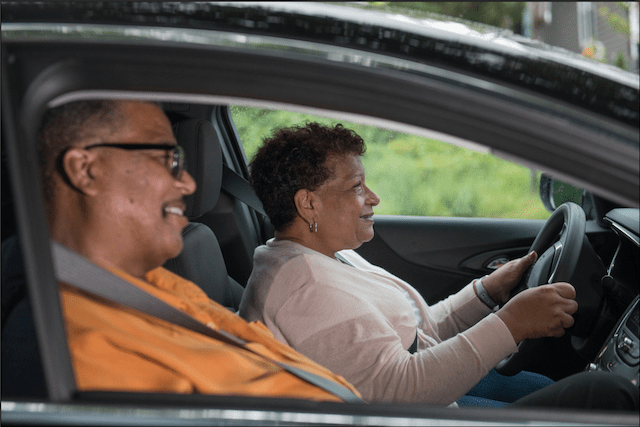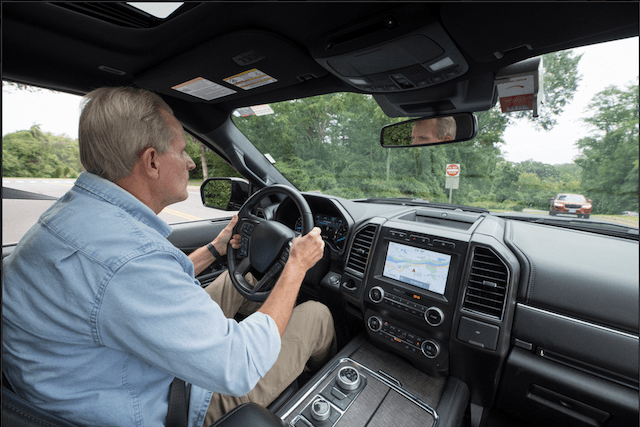More older drivers are on the roads today than ever before – there are 49.6 million drivers in the United States age 65 and older as of 2021, according to the most recent report from the National Highway Traffic Safety Administration. That was a 38% increase from 2012, compared to just a 10% bump in the total number of licensed drivers.
But along with that growth has come a sharp increase in traffic deaths. The number of fatalities in senior driver crashes nationwide reached its highest point in more than 20 years.
“Older drivers aren’t necessarily worse drivers than their younger counterparts,” said Mark Schieldrop, Senior Spokesperson for AAA Northeast. “In fact, AAA research shows that seniors are less likely to engage in risky behaviors behind the wheel. But they are at greater risk of being killed or seriously injured if a crash occurs.”
Remaining an active driver can provide older adults with a much-valued level of independence. However, the physical and cognitive changes that come with aging, coupled with medical conditions and increased medication use can put older drivers at a greater risk behind the wheel.
AAA Northeast is encouraging seniors and their families to have discussions about how to ensure safe mobility for years to come.
Here are some of the biggest challenges older drivers face and how to overcome them.
Vision Problems
Just about everyone’s eyesight gets worse as they age thanks to a condition called presbyopia. Over time, the lenses in your eyes stiffen, making it more difficult to focus on nearby objects. Other diseases, such as glaucoma, cataracts and macular degeneration, can exacerbate the problem.
On the road, vision problems can make it difficult to see pedestrians, cars, signs and hazards, especially at night or in low-light conditions. A study conducted by the Insurance Institute for Highway Safety found that one-third of crashes involving older drivers were the result of inadequate surveillance, mostly looking but not seeing another vehicle or traffic control.
Hearing Loss
Hearing loss is another common problem for older adults, and though we might not think of hearing as a critical sense for driving – it is. Recognizing horns and sirens can help you steer clear of danger and avoid a crash.
Sore Muscles and Joints
As you age, your muscles may become weaker and your joints stiffer. Arthritis, or joint inflammation, is particularly common in older adults. It can be painful to move afflicted parts of your body, making it difficult to pull off even the most basic physical movements needed to drive a car safely, such as turning the steering wheel, applying pressure to the brake or accelerator and turning your head to see your surroundings.
Medications
Research from the AAA Foundation for Traffic Safety found that nearly 50% of older drivers were using seven or more medications. Many medications come with potentially impairing side effects, such as blurred vision, confusion, fatigue or incoordination. Symptoms like these can increase the likelihood of a crash by up to 300%.
Slow Reaction Time
Reflexes tend to slow down as you age, making it difficult to react to sudden changes on the roadway in a timely manner. This can put you at a greater risk for a crash.
Traffic Difficulties
Studies have shown that older drivers have more trouble with specific aspects of driving. These include merging, passing through intersections and judging the space between vehicles and the speed of other cars.

How Older Drivers Can Remain Safe Drivers
- Talk to your doctor. Have an honest conversation with your doctor regarding your health and whether or not it’s safe for you to drive. You may also want to devise an exercise program under their guidance to increase your strength and flexibility.
- Ask about side effects. According to the AAA Foundation for Traffic Safety, many drivers prescribed potentially impairing medications are never warned by their health care provider about how the medicine could impact their driving ability.
- Get your eyesight checked regularly. Your vision changes as you age, so make sure to visit your eye doctor at least once a year. Never drive without wearing your prescribed glasses or contacts.
- Be smart about when you drive. If possible, avoid driving at dawn, dusk or nighttime. The limited light and/or sun glare during these times of day make it more difficult to see. You also may want to make things easier for yourself by avoiding the road during rush hour and other times of high traffic.
- Take an adult driving lesson. Learning how to drive is not just for teenagers. Whether you’re a brand-new driver or just need a refresher, it’s never too late to improve your skills behind the wheel. As always, AAA is here to help. Learn about our Adult Driver Training program and sign up today!
- Adapt your vehicle. Hand controls can allow you to operate the brake and accelerator with handles, which you may find easier than using your feet. Seat boosters can give you a better line of vision from behind the wheel.
- Learn about AAA’s CarFit assessments:
Learn more about AAA’s senior driving resources, including information on how older drivers can extend their driving careers and prepare for “driving retirement.”
Are you an older driver? What are some challenges you’ve encountered behind the wheel? Let us know in the comments below.
This article has been updated and republished from a previous version.
59 Thoughts on “Top Challenges for Older Drivers”
Leave A Comment
Comments are subject to moderation and may or may not be published at the editor’s discretion. Only comments that are relevant to the article and add value to the Your AAA community will be considered. Comments may be edited for clarity and length.

















Headlights on new cars and trucks, are brighter, and placed higher, requiring regulation of the lumens and placement.
yellow glasses are needed to mitigate the night blindness from the new auto headlights, these lights should be banned from being on highways, parkways, expressways, etc.
RX yellow glasses should be regulated and rated for to their ability to reduce the intensity of headlights, in autos employing high-lumen lights/bulbs, including the placement of those lights.
I was a driver safety course instructor. While all of your pointss may be valid, you neglected to mention tailgaters w3ho wish to go 65 in a 45 mile zone and the increasing number of drivers passing illegally on the right
Hi
Nighttime is horrible for older drivers. Everyone gets presbyopia. I suffer from this.
Combined with rude, distracted and aggressive drivers today, you have to drive defensively. We need more law enforcement on the roads!
It is very easy to lose your concentration whilst driving. We need to concentrate on where we are going. Not to miss turns. Your mobile phone can give you precise instructions door to door. To concentrate, avoid conversation with your passenger. Stay alive.
According to IIHS statistics, in 2021, the motor vehicle death rate (deaths per 100,000 persons) for those aged 70 and over was 13.9. For those 20-34 it was 19.0. For those 35-69 it was 14.3. So which age group has a driving problem?
I previously held a position as Traffic Supervisor in my town and found that 90 % (just my estimation) of fast drivers were the very young drivers (ages 20-30). They seem to lack the ability to control their need for speed and/or enjoy going fast. Also, they seem to be easily distracted also showing an inability to concentrate on their driving. I feel that these two areas are critical to Driver’s Education, yet may be lacking. I have also noticed that drivers over 65 yo have difficulty with the brightness of some vehicles’ headlights. Sometimes wiping out their vision entirely, however mostly seeing “starbursts” that make it very difficult to see at night. Most older people are wise enough to stay off the road at night for this reason and slippery conditions.
You made the statement that you noticed drivers over 65 years old have problems with the brightness of headlights. My many conversations with drivers of most ages tell me ALL of them have problems with the newer headlights some lights being worse then others. I would suggest you do a little more research on your comments before you pick out certain age categories.
definitely these newer head lights They are blue white and blinding and I am pretty sure its not just the seniors
In reference to this statement, I don’t believe in this article because I am over 50 myself and the way these young people drive they are tailgating like crazy. Also, our government is tying up the hands of the police are doing their job and I know this short backed up talking to a lot firefighters policeman, and they all tell me the same thing, especially in Massachusetts. The government is tying hands up of the law enforcement offices. But they need to do is back up the police and let them do their job. You pedestrian walking in front of cars going to greenlight. The cars are running red lights because the police are afraid to do their job because of our government. It’s time we get back to basics and let the alarm enforcement offices do their job and also protect them.
One big help as I drive at night is to make sure that my windshield is clean and that my wipers are non streaking. Further, I try to look as far ahead as I can and make sure I am as far away from the middle of the road as safety will allow. It also helps to keep the instrument panel as dark as you can stand. (Keep your glasses clean too!)
The major problem with high beams, whether LEDs or other technologies, is not your own, assuming you are a responsible driver, but the other guy’s. As we all know, it can be blinding on a two lane road when and oncoming car does not dim its lights. This behavior can and does cause fatal accidents. In some European countries it is illegal to drive with bright beams on in the face of oncoming traffic. And I understand that this law is actually enforced in France with a stiff fine for violation.
So true! Especially when you are in a sedan (like me) and the other vehicle is an SUV. Automotive designers should design the headlights so that they point to the road not the oncoming driver.
I have found yellow clip on lens covers to be helpful with glare. There are polarized versions but I have not tried them.
Where can polarized versions of the yellow lens be obtained? Just curious.
Rotaries or circles with two lanes are abundant in Florida. Those drivers on the inside lane wanting to exit the circle can cut in front of you. They are dangerous and few know how best to handle them..especially older drivers accustomed to stop 🚥 from the
Northeast.
I notice the number of comments that refer to overly bright LED headlights. It could be drivers traveling with high beams. My new Pacifica has auto-dimming feature that senses approaching lights and switches off the high beams. This feature is a must have, because if you blind an on-coming car, you may be the one it hits. Also, every vehicle inspection should include a check for correct headlight aim. It is clear from these comments that it is extremely important. BTW – I also find over-bright headlights to be an irritant while driving. Finally, cataracts in ageing eyes scatter light terribly. I have had mine fixed — it is a fairly straight-forward procedure and has improved my night vision tremendously. Everyone gets cataracts as they age, and if you are over seventy, you need this operation.
It’s the LED lights! If you need to drive with your high beam lights on all the time-you need to give up driving at night-I’ve been night blind since I got my license – in the mid eighty’s!-I would love give up driving-but, I need to work for a living. As for everyone over 70 needing cataracts-my parents don’t have cataract-over 80 and do not drive at night
I find that newer vehicles with auto LED high beams blinding as they do not auto dim until they are within 5-10 feet of you. Also when driving ahead of a car with auto LED high beams they are so blinding in my rear view mirrors. Especially irritating is when at a traffic light and the car across the intersection has the auto high beams on.
Another suggestion for older drivers is to remove that handicap placard from your rear view mirror unless you’re parked in a handicap spot. I wish the police would enforce that more. Driving with that still attached to your mirror definitely obstructs your field of vision.
Extra bright LED headlights are a major safety hazzard for everyone, especially older drivers.
Also overly bright lights from parked emergency vehicles make it difficult to see anything but the lights themselves.
My problem with LED lights are the star burst effect, I feel like I’m on an episode of Star Trek going into warp drive. It is frustrating and dangerous. You get a group of cars such as at a traffic light and you can’t see anything. You have to drive looking away from the lights until they pass. I know this isn’t a new problem but I felt it was worth mentioning. Also this is a problem across the country, I’m hearing more and more complaints about this.
I recently drove from CT to TX,and the 3 biggest problems I endured were ,,,1 Glare from led headlights,,2 The amount of debris in the road, from ladders to full trash bags to bumpers that had fallen off,,even a mattress..3 Coming into Chattanooga TN on Rte 81,the quick changes in lanes from far right to far left to far right in 600 feet,,,its insane!!
LED lights should be made illegal, since they do often cause so many problems.
Racing develops driving skill, preserves mental and physical acuity and certain scary programs such as hill climbing, rallying, etc. that tickle the brain’s amygdala promote neuron regeneration in the senior brain, extending one’s ability to drive well beyond the norm. A program where one can plan. design and execute complex engineering to a satisfying long term conclusion also adds neurons to the pot, reversing the aging process. It is very important to be able to control one’s oxidative stress levels so wheel to wheel racing where other drivers can ruin your day are not as beneficial. In other words I can take my foot off the gas whenever stress got out of hand.
At age 76 I was routinely finishing on the podium in major events such as Giant’s Despair and Mount Washington, hitting 160 MPH on narrow, bumpy mountain roads. My reaction time was about 1/4 second and still is some 11 years later. I kept getting faster as I got older, but stopped racing only because my wife asked me to. I have driven to FL from New England 3 times without incident as an octogenarian. Oh I did get stopped in NC for cruising at 96 MPH by an unmarked cruiser. I told him I thought he wanted to race me and was waiting for him to catch up. The trooper laughed so hard when he discovered my age that he let me go with a verbal warning.
My achievements are not unique to me as I personally know of a half dozen other seniors who match or exceed my race performance. An 81-year old is still winning major events while another is a consistent podium finisher. One class winner was still winning and professionally driving an eighteen-wheeler well into his seventies. Use it or lose it!
Bette Davis said it best: “Old age is no place for sissies.”
Racing on the highway is unacceptable at any age. You may be fortunate enough to not get into an accident but certainly may be the cause of one or more because of your reckless behavior.
LED lights,especially on higher vehicles such as SUVs , blind drivers in cars as they approach.
The bright headlights hurt my eyes and I was unable to see the road clearly. I got a non glare coating for my eyeglasses and it really cuts the glare from the headlights.
Night driving is a major difficulty for me. Also, even in daylight, the center line, the lane lines and the fog line on the side of the road, if they have not been newly painted, cause me a lot of difficulty.
Definitely road lane markers need to be freshly painted this is a big problem in Massachusetts
I agree. The lines on roads are terrible – non-exsistent or very faint, hard to see on many roads in Massachusetts. I do not drive at night.